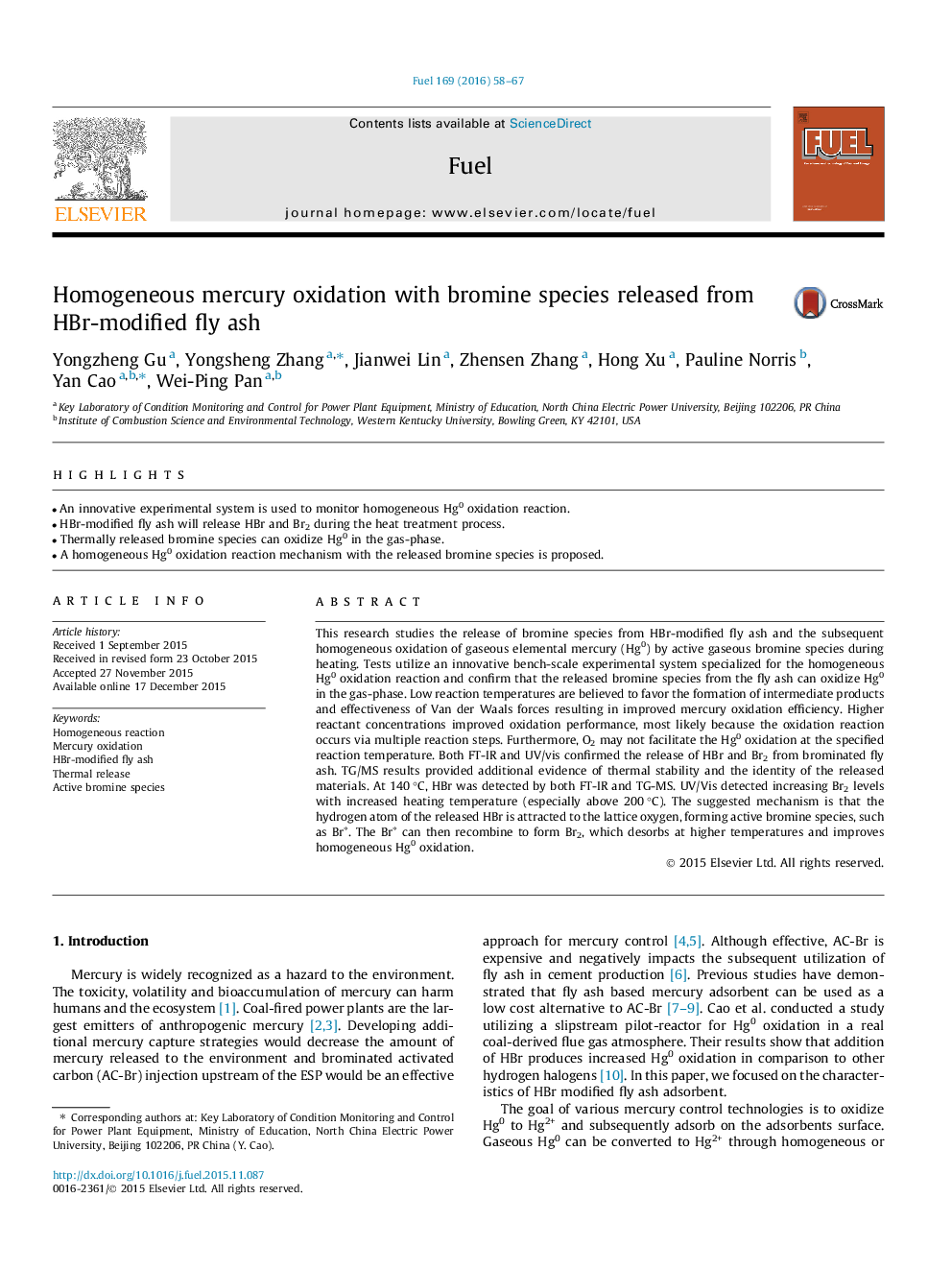| کد مقاله | کد نشریه | سال انتشار | مقاله انگلیسی | نسخه تمام متن |
|---|---|---|---|---|
| 205314 | 461104 | 2016 | 10 صفحه PDF | دانلود رایگان |

• An innovative experimental system is used to monitor homogeneous Hg0 oxidation reaction.
• HBr-modified fly ash will release HBr and Br2 during the heat treatment process.
• Thermally released bromine species can oxidize Hg0 in the gas-phase.
• A homogeneous Hg0 oxidation reaction mechanism with the released bromine species is proposed.
This research studies the release of bromine species from HBr-modified fly ash and the subsequent homogeneous oxidation of gaseous elemental mercury (Hg0) by active gaseous bromine species during heating. Tests utilize an innovative bench-scale experimental system specialized for the homogeneous Hg0 oxidation reaction and confirm that the released bromine species from the fly ash can oxidize Hg0 in the gas-phase. Low reaction temperatures are believed to favor the formation of intermediate products and effectiveness of Van der Waals forces resulting in improved mercury oxidation efficiency. Higher reactant concentrations improved oxidation performance, most likely because the oxidation reaction occurs via multiple reaction steps. Furthermore, O2 may not facilitate the Hg0 oxidation at the specified reaction temperature. Both FT-IR and UV/vis confirmed the release of HBr and Br2 from brominated fly ash. TG/MS results provided additional evidence of thermal stability and the identity of the released materials. At 140 °C, HBr was detected by both FT-IR and TG-MS. UV/Vis detected increasing Br2 levels with increased heating temperature (especially above 200 °C). The suggested mechanism is that the hydrogen atom of the released HBr is attracted to the lattice oxygen, forming active bromine species, such as Br∗. The Br∗ can then recombine to form Br2, which desorbs at higher temperatures and improves homogeneous Hg0 oxidation.
Journal: Fuel - Volume 169, 1 April 2016, Pages 58–67